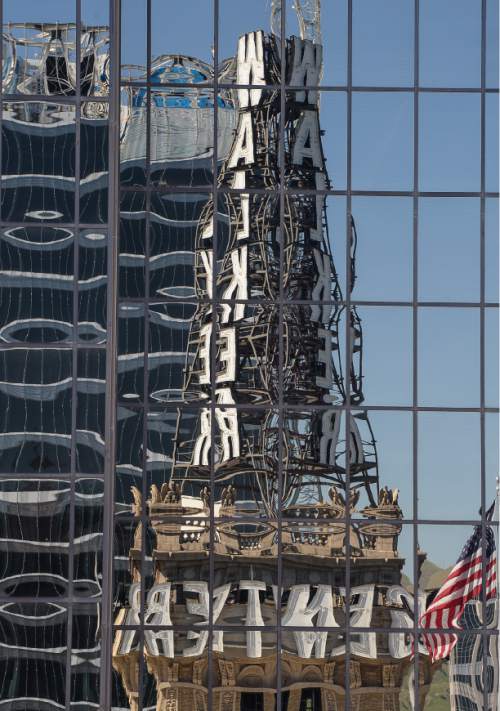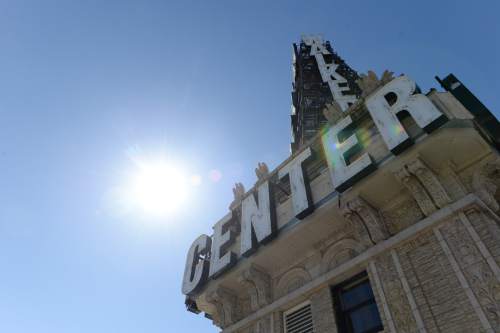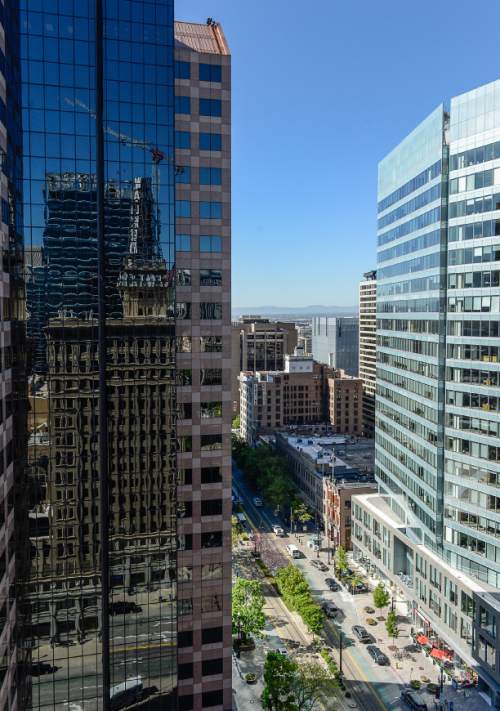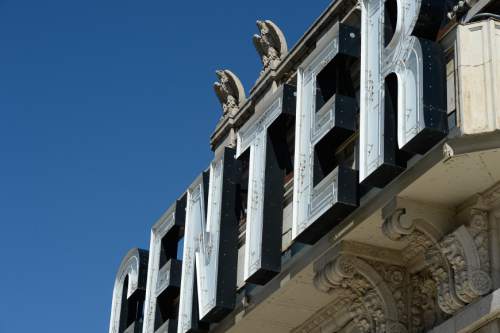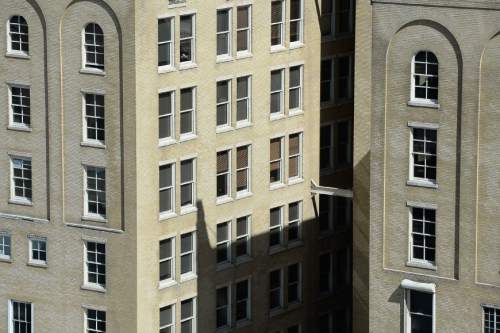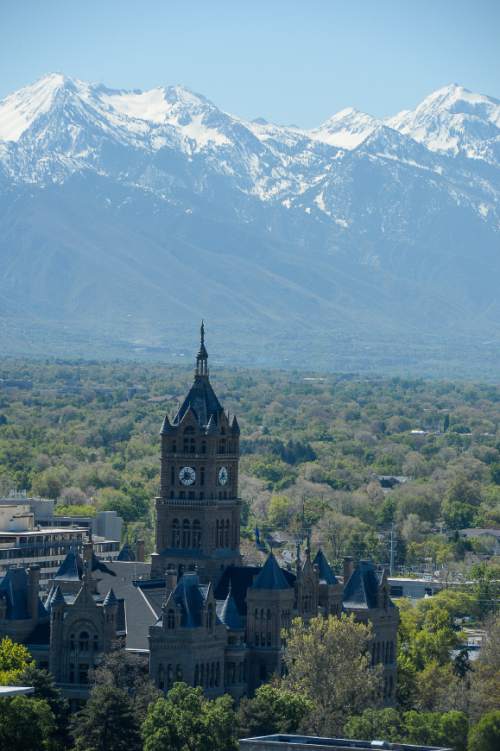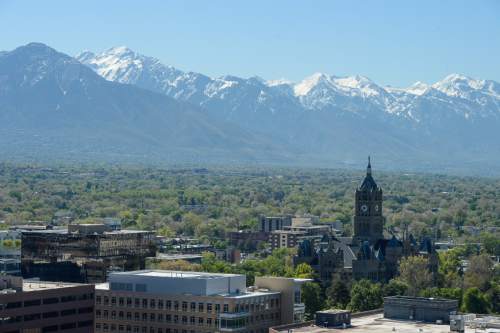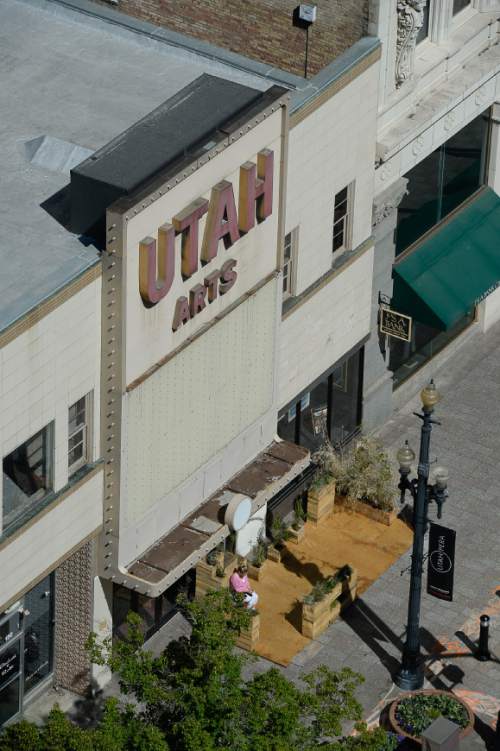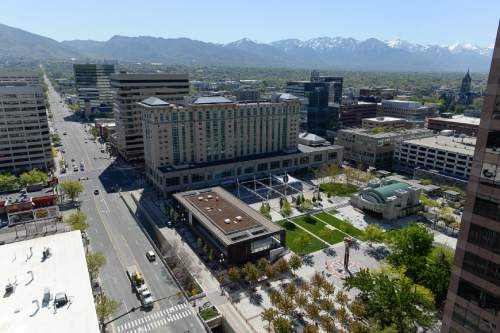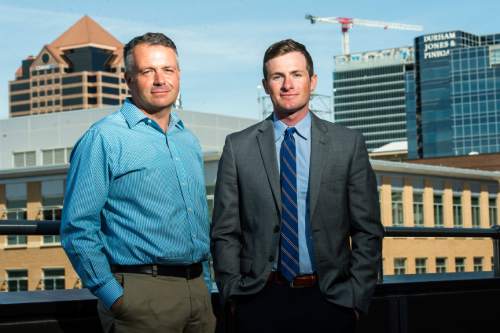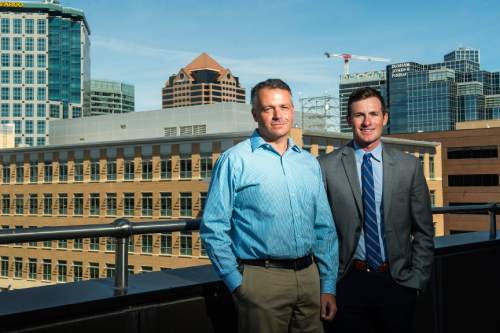This is an archived article that was published on sltrib.com in 2016, and information in the article may be outdated. It is provided only for personal research purposes and may not be reprinted.
The chief boosters for Salt Lake City's decade-old Downtown Rising campaign could be taking deep bows right now.
They could be soaking up kudos for dramatic growth and development in the central business core, for Main Street's elegant new mall and Broadway-style theater, the mint skyscrapers and office spaces, the hundreds of new apartments luring millennials and retirees to the urban center.
Top Utah politicians and business leaders celebrated downtown's success with a news conference last week atop the Walker Center, heralding Downtown Rising along with the city center's amazing rebound and refurbishing since 2006. At times, Gov. Gary Herbert, Salt Lake County Mayor Ben McAdams and Salt Lake City Mayor Jackie Biskupski could barely be heard as work crews below hammered away, finishing the $119 million-plus George S. and Dolores Doré Eccles Theater.
But the next day, Jason Mathis, executive director of the Downtown Alliance, which runs Downtown Rising, winced when he was offered even a bit of credit.
"We're good at creating awareness and pointing things out, but we don't necessarily have the ability to make downtown rise," Mathis said at the Salt Lake Chamber's office. "We're really good cheerleaders, but we don't own anything, we don't have any money, and we don't have any real power."
The true powerhouse has been Utah's economy as it soared out of the Great Recession. Along with it, downtown real estate markets have surged, with a healthy share of investments coming from out of state. Retailers and other businesses have set new records for sales, particularly in the years after the unveiling of City Creek Center, the $1.5 billion shopping and residential hub erected by The Church of Jesus Christ of Latter-day Saints on Main Street.
What Downtown Rising has accomplished, Mathis said, is to capture the imagination of what the heart of a city can be.
Behind the scenes, he and others said, it has offered access to a flow of communication, a conduit for conversations among business owners, developers, public officials, planners, community advocates and others with a stake in downtown.
Downtown Rising has a small budget and a part-time staff of Downtown Alliance employees, their efforts funded by public and private sources, including donations from developers, construction firms, lenders and retailers and a variety of government agencies.
Whether with a key nugget of information on city zoning, details on parking or clues about neighboring property owners' plans, Mathis said, the Downtown Alliance sees itself as a key convener of talks and connections.
Said Jesse Dean, the Downtown Alliance's director of urban development: "We're the eyes and ears on the ground for what is happening in downtown."
Downtown Rising also advocates for business and helps developers navigate City Hall. It is a booster of virtually anything that lifts land to what Mathis and others call "its highest and best use." Its staff also tries to break down Balkanization between separate pockets of downtown in favor of a complete vision.
"Sometimes developers and city interests get fixated on one project in a specific neighborhood," Dean said. "Downtown Rising is more of a cohesive view. This is all of downtown; this is what it means to have a regional center for culture, commerce and entertainment."
As an example, while the Downtown Alliance is funded through membership dues paid by commercial property owners downtown, Mathis explained, the agency is a full-throated supporter of new housing — even if it converts commercial parcels to homes.
"We love housing, period," said Mathis.
As the Salt Lake City Council approaches final approval of its downtown master plan — a zoning and development document years in the making — the Downtown Alliance is embarking on its own public survey and parcel-by-parcel analysis of the business core, bounded by 400 South, 700 West, North Temple and 300 East.
The obvious hope, said Mathis, is to produce the best vision to continue downtown's upward swing.
"If we can help to corral and coordinate and build consensus about what our city will look like," he said, "it will be so much better and it will happen much more quickly."
Twitter: @TonySemerad


